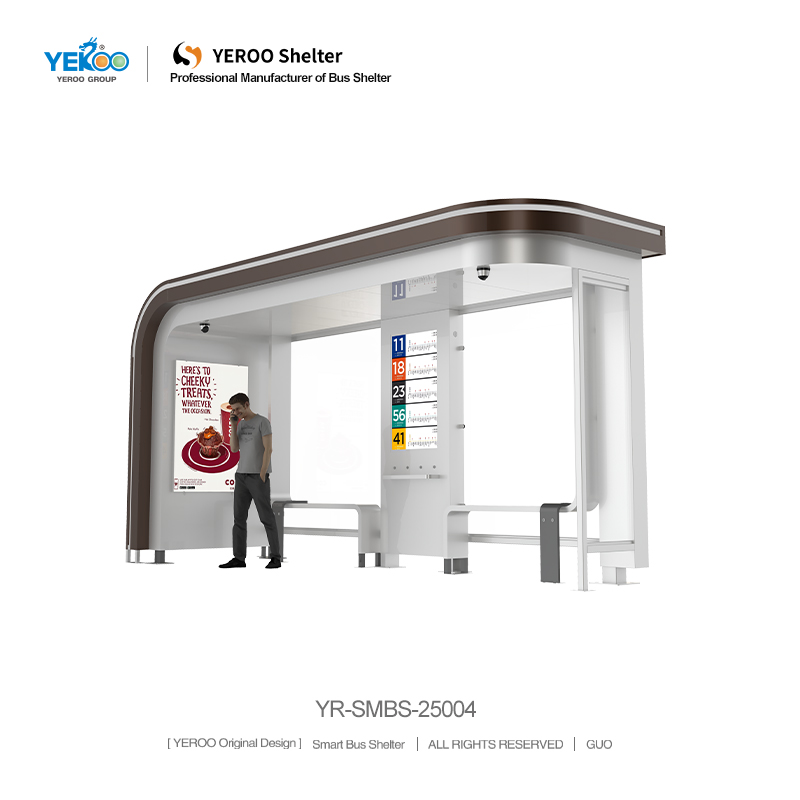What Benefits Do Digital Bus Shelters Bring to Public Transport
Digital bus shelters are quickly becoming a new standard in public transport. In addition to meeting the needs of passengers and transport authorities, they employ state-of-the-art technology. Unlike regular bus shelters, digital bus shelters enhance customer experience, streamline operational efficiency, and generate intangible returns that justify the cost of digital bus shelters. As a pioneer in modern public infrastructure, Yeroo Group (https://www.yeroogroup.com/) offers design solutions for digital bus shelters, which address varying urban transport requirements. The following outlines the advantages that digital bus shelters bring to public transport.
Provide Dynamic, Real-Time Transit Information
Having no information in a waiting scenario is frustrating. Yeroo Group’s shelters use high brightness LCD/LED screens to inform passengers of any changes to arrival times and even changes to the route. Real time updates are provided to passengers. If traffic conditions change and a bus is late, the system updates the time and even the arrival changes. This level of transparency and ease of information is a large improvement to current public transport systems and will encourage passengers to use public transport as opposed to a personal vehicle.

Although digital bus shelters might seem expensive at first compared to regular bus shelters, the increase in ridership ensures elevated economically advantageous returns for transit systems in the long run.
Comfort and Convenience for Passengers
Digital bus shelters enhance the comfort and convenience of the waiting passengers for the entire time they are at the shelter. Yeroo Group’s designs go to the next level with USB charging ports, adjustable LED lights, and climate control systems like cold weather heaters and summer fans. Some even have touch screens for passengers to access local area maps, points of interest, and alternative transit routes to make their waiting time productive. These features have a strong impact on reducing passenger churn, improving the long-term viability of the entire public transportation system when taking bus shelter prices into account.
Use of Advanced Analytics to Improve Transit Operations
Digital bus shelters actively assist transit authorities in improving transit operations through enhanced analytics and reporting.
Yeroo Group’s digital models include built-in sensors that track passenger flow, weather conditions, and even shelter usage patterns. This data allows authorities to make decisions that rely on facts, such as adjusting bus frequencies during peak hours, adding bus shelters in certain areas, and even allocating maintenance teams in a more efficient manner. For instance, if the sensors indicate that a digital shelter near a school route has 40+ people during the morning hours, an extra bus could be added to the route to mitigate overcrowding. Although digital bus shelters have a higher initial cost, the operational efficiencies gained, such as decreased fuel costs from optimized routes, counterbalance the costs in the long run transit agencies budgets.
Safety and security of passengers
Passengers using public transport want to feel safe and digital shelters help in addressing this issue. Yeroo Group’s digital models have integrated security systems that include 24/7 surveillance cameras linked to local police, lights that sense motion and are activated when someone approaches after dark, and panic buttons. The digital shelters also contain bright screens that illuminate the surroundings which helps in countering and deterring potential threats.

Take a passenger waiting for a bus at a digital bus shelter, for example. It’s a late-night shift. She knows the shelter is equipped with lights, surveillance cameras, and a panic button, and feels more secure. This is valuable safety for public transit system users. It enhances the public transit system user base and accessibility for vulnerable users, such as the elderly and people traveling alone, or at odd hours. For such vulnerable users, system safety and security goes a long way. When considering the bus shelter value, potential safety sacrifices of traditional, non-digital bus shelters go on the cost side.
Create Additional Revenue Streams for Transit Systems
Digital age bus shelters and non-physical shelters creatively reinforce public transport systems and increase the value of public transport systems. This offset potential shelter value and system value losses from public system reliance and the system’s value reliance on public shelter funding. Yeroo Group’s digital shelters advanced public transport systems for digital bus shelters. They allow transport systems users to personalize jump spaces to target ads for local businesses. Targeted local business ads, transformed in public transport spaces from digital bus shelters, lends consistent revenue for public transport systems to enhance services. For example, a city with 50 digital bus shelters could earn consistent monthly revenue from local retailers advertising on shelter screens. This revenue makes digital bus shelters financially viable as they become self-sustaining over time.
Conclusion
Digital bus shelters enhance the public transport system's value with the provision of real time information. It improves passenger comfort, optimizes operations, safety, and revenue.
Though the shelters may cost more at the beginning, considering the increase in ridership and operational savings they provide is more rewarding than the initial investment. Yeroo Group’s digital bus shelters are designed to capture these benefits, which makes them the best option for cities trying to improve their public transport and more efficient, user-friendly transit systems. For public transport authorities looking to create resilient, future-ready systems, digital bus shelters are a key investment.


